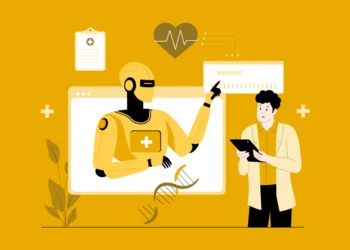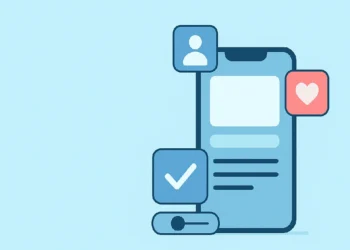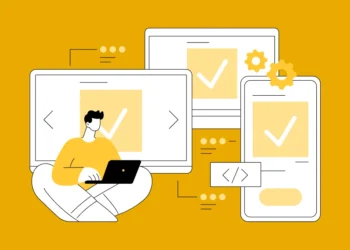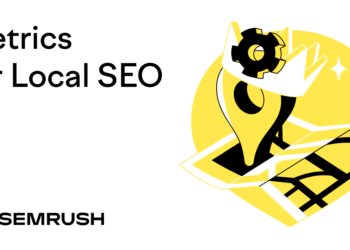Do you want to run in this digital world where digital experiences are evolving faster than ever? So AI is the main thing behind many of the most successful and powerful web applications we use today as a basic essential. From smart video editing tools like Runway ML to intelligent chatbots and recommendation engines, custom AI web apps are reshaping industries worldwide.
As everyday users, you may have many questions regarding this, like, “How exactly are these intelligent apps built? What tools and frameworks power them? And what makes them different from regular web applications?” Let’s discuss these points in this blog.
So let’s see in this blog the complete process of developing custom AI-powered web applications. We’ll explore the essential tools top developers use and check in on some real-world examples to get inspiration for your next big idea.
What Is Custom AI Web Application Development?
A web application is a browser-accessible interactive software program that works on a web server. Web apps are readily available across devices and don’t need to be installed, like traditional desktop apps. Take Google Docs or Trello, for example; they are robust, browser-based, and easy to use.
Now, if we add artificial intelligence, machine learning (ML), natural language processing (NLP), and computer vision are examples of AI technologies that can be used in a custom AI web application to make app development more intelligent and practical.
Important Elements of Developing Web Applications:

Now, all the developers concentrate on several crucial elements if they want to create a web application that is both robust and scalable. That is crucial in making sure there isn’t
1. Frontend Development
The frontend is the visual and practical side of the application where users interact. This side is for users; it covers all the buttons, forms, animations, layout, and even design. It should be user-friendly so that everyone can use the app effectively.
2. Development of Backends
The backend is in charge of overseeing the inner workings of the application. It manages database interactions, server operations, business logic, and API communication. Node.js, Python (Django or Flask), Ruby on Rails, and PHP are examples of common backend technologies.
3. Administration of Databases
Web apps require a location to effectively store and reuse the data on time. Databases like MySQL, PostgreSQL, or MongoDB help in organizing and managing this data, from user profiles and content to transactions.
4. Authentication and Security
An essential component of any web application is security. To guard against common threats like SQL injection, cross-site scripting (XSS), and data breaches, developers implement authentication systems (like JWT or OAuth), data encryption, role-based access, and security protocols.
What Is Runway ML and Why Are AI Creative Apps So Popular?
One of the top platforms changing the way creatives use AI in their workflows is Runway ML. Without ever writing a line of code, it enables users to use machine learning models to create, edit, and improve images and videos.
Runway ML provides a variety of strong tools that are particularly well-liked by video editors, content producers, designers, and even social media marketers. These tools range from text-to-video generation to background removal and real-time editing.
However, why are Runway ML and similar platforms becoming so popular?
The growing need for speed, creativity, and efficiency in content production is the answer, and artificial intelligence is assisting in the excellent resolution of all these issues. Everyone, not just experts with sophisticated technical skills, can now access high-quality design and editing tools thanks to AI-powered creative apps.
Core Features of AI Apps Like Runway ML

Runway ML and other AI creative tools are intended to make the process of creating content easier. Professionals and novices alike can use them because they combine robust machine learning models with simple, cost-effective designs. Some of the primary characteristics that distinguish these apps are as follows:
1. Generating Text to Image and Text to Video
Using sophisticated generative AI models like Gen-2 or Stable Diffusion, users can create realistic images or videos by writing straightforward text prompts.
2. Real-Time Video Editing
Runway ML offers AI-powered tools that help users to edit videos in real time. It can help in every aspect, from object tracking to automated masking and green screen removal, without any manual frame-by-frame adjustments.
3. Background Removal and Replacement
With just a few clicks, users can remove or change backgrounds from videos and images using AI segmentation, which used to require advanced software like After Effects and Photoshop.
4. AI-Powered Object Recognition and Motion Tracking
Because AI models can follow faces, objects, or motions throughout a video, creators can produce motion graphics, visual effects, and transitions more quickly and accurately.
5. Cloud-Based Workflow and Collaboration
Because these applications are web-based and run on the cloud, users can collaborate, access their projects from any location, and process large files without the need for expensive hardware.
As these apps are web-based, users can work collaboratively, access their projects from anywhere, and process large files without needing high-end hardware; everything runs on the cloud.
Real-World Use Cases of Custom AI Apps

Custom AI-powered applications are not limited to just tech persons; they’re actively transforming workflows across every industry. By automating creative tasks and enhancing production quality, these apps are doing everything with such ease.
Let’s see some industries where AI creative apps are making an impact:
Advertising and Marketing
Automate content creation, video advertisements, and social media graphics.
Use AI-powered editing and copywriting tools to expedite the creation of campaigns.
Media & Entertainment
Make animations, virtual characters, and special effects without expensive equipment.
AI-powered editing for trailers, music videos, and movies.
Online Education & Learning
Create interesting course materials, animated explainers, and instructional videos.
AI can be used for visual aids, voiceovers, and subtitle creation.
Retail and E-Commerce
Create banners and product demo videos using AI-generated graphics.
Automate background removal, lifestyle mockups, and product photo editing.
Medical Education and Healthcare
Use AI-generated medical animations or images to visualize complex data.
AI can be used in patient engagement platforms, simulations, and instructional videos.
From automating mundane tasks to enhancing creativity, custom AI apps help businesses produce faster, better, and more innovative content, giving them a strong competitive edge in the digital landscape.
Step-by-Step Process to Build a Custom AI Web Application

Building a custom AI web is more than just coding; it’s a combination of smart planning, choosing the right tech, integrating AI models, and ensuring a smooth user experience.
1. Identify the issue and establish objectives
Determine the issue that the app is intended to address first. Does it have to do with video editing automation? Improving suggestions for products? Making this clear aids in defining the goal and essential functions of the app.
2. Gather and Prepare Information
The fundamental and crucial component of an AI model is data. Gather pertinent datasets (text, photos, videos, etc.), then clean and label them. However, this step can be reduced if you’re using models that have already been trained.
3. Select the Appropriate AI Model
Choose the right machine learning or deep learning model based on your use case (e.g., text summarization, image generation). A pre-trained one, such as GPT, DALL·E, or Stable Diffusion, can also be used.
4. Create the Web Architecture
- Organize your application by selecting:
- Frontend (user interface; Vue.js, React, etc.)
- Backend (logic/API: Flask, Node.js, and Django)
- Database (MongoDB, PostgreSQL for data storage)
5. Include AI Features
To incorporate AI into your app, use programs like Hugging Face, PyTorch, TensorFlow, or external APIs (like OpenAI and Runway ML). Model training or cloud-based AI services are two ways to accomplish this.
6. Construct, Examine, and Adjust
Phase the app’s development, test each module, and get user input. Test your AI’s performance in real-world situations and make necessary modifications.
7. Implement and Track
For a seamless deployment, host your web application on a cloud platform (such as AWS, GCP, or Azure) and make use of tools like Docker. After launch, track user behavior, model performance, and usage to make adjustments.
Conclusion
Custom AI web applications are developing and becoming effective tools for companies and creators as AI transforms every industry. These apps provide genuine value, whether it’s automating video editing, creating intelligent content, or improving user experience. What’s even better is that they’re more widely available.
AI-powered web apps are the future of digital innovation, not just a fad, as evidenced by platforms such as Runway ML and practical applications in e-learning, marketing, and healthcare.
Working with Mobile app development company in Bangalore can make all the difference if you’re trying to realize your idea. With the right team, tools, and process, your app can go from concept to creation, blending AI technology with intuitive design.
Actually, in addition to assisting you in creating a workable product, the best mobile app development company in Bangalore will also help you with AI integration, deployment, and long-term expansion. Custom AI web apps aim to solve real-world problems more quickly, intelligently, and creatively than ever before. They are not just about technology.
















